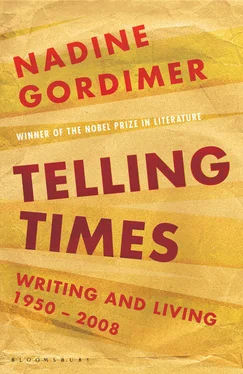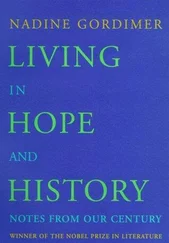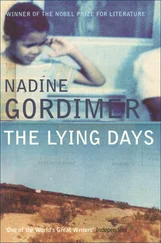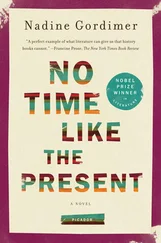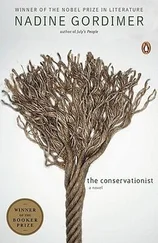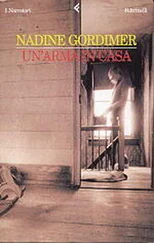Here, among the real population, the people themselves, not enough seemed to have changed. Nasser’s infant industrial plans are not yet sufficiently under way to thin out the ranks of the thousands who exist on half-jobs, waiting for a share of a half-job, or simply waiting for the opportunity to turn some absurd and unwelcome service into a job — the urban manifestation of an over-populated country that is increasing its count of souls by the disastrous number of a million every two years. And while the military caste is raising its standard of living hand over fist along with its social position, the civil servants are struggling to keep up decent appearances on salary scales that would have been adequate before the last war. Many people told me that these totally unrealistic salaries were largely responsible for corruption; families could not hope to make ends meet without the ‘little extra’ brought in by bribes.
Yet though these facts were disappointing — they were at least negative — by and large, they had not been brought about by the new regime; the new regime had failed, as yet, to change them.
One of the things I had liked about Cairo, five years after the revolution, I decided, was what I cautiously call national confidence — something that I don’t believe has anything to do with the braggart ‘Voice of Cairo’ or Pan-Arabism, or, indeed, anything more ambitious or aggressive than an inner assurance that each man is a man measured against his own people, and not a cipher found wanting against the standards of those who are born of other countries and to other opportunities. All of a piece with this was my satisfaction when I saw what good care the new government is taking to preserve many of those great hunks of the past which jut out here and there, all over Cairo — walls and city gates as well as more obvious and spectacular monuments. When I went to the Cairo Museum, that very morning of my last day in Cairo, I was not surprised to see that although the tourists were reduced to myself, two whispering Indian girls and an American couple sitting exhaustedly in a window embrasure, the museum was full of parties of Egyptian schoolboys and girls; it seemed to me natural that a young and poor nation should be eager to teach its children that it is not so young or so poor, after all.
But what was a horrifying surprise was the state of the museum. It was dusty and dingy as a second-hand dealer’s; many exhibits had lost their labels, and those of others were almost indecipherable. Vaguely military-looking attendants lounged about, their sticky tea-glasses stowed away in dark corners. Even in the Tutankhamen rooms the jewellery is falling to pieces and the gold is flaking off the incomparable splendour of the shrine. Such neglect of the exquisite work of human hands that has survived time almost long enough to have achieved immortality gives you a feeling of real distress; I had hastened back into town to find someone who could explain to me why this was being allowed to happen. And then I heard about another side of national pride, a foolish, childish side, that will see its wonderful artistic heritage rot rather than let the foreigner — any foreigner — bring the expert help and knowledge that is needed to preserve it.
The train finally did go, and I woke up next morning in an Egypt that is not Cairo. For the next few days I followed the life of the Nile. Where in the world do you get a statement of the human condition as simple and complete as this? Look out of the train or car window and the entire context of the people’s lives is there — the river, the mud, the green of crop and palm it nurtures, the desert. There is no existence outside the beneficence of the river, the scope of the mud, the discipline of the desert. This pure statement comes like peace, after the complexity and fragmentariness of life as we know it.
The land looks as it has always looked — ‘always’ is an impudent five years, for me, out of many thousands. Although the big estates have been broken up under a fairly vigorous and, most people agree, fairly successful agrarian reform, they are worked by the same people in the same way. I was struck again by the unfair picture of these people that soldiers who had been in Egypt during the War gave to their Western countries. I know that South Africans built up for me a caricature of a squinting, cringing, night-shirted Egypt — ‘those old Gyppos’. The fact is that many of the peasants, who went on with their work in dogged dignity, as we walked past, are good-looking, while the youths, especially the Nubians round Aswan, are as beautiful as the lovely faces in tomb carvings. This is extraordinary when you remind yourself that these people have been underfed and debilitated by bilharzia and malaria for many generations, and that ever since year-round irrigation was achieved, they have been overworked as well.
Strung along the Nile, their villages appear as single units — no straggler houses, and a shelter of palms drawn in around them, fortressed against the sun. In the distance they seem to be those very oases that appear in the deserts of fairy tales. The beauty of this poverty has to be shaken off. Then you see that these people are breathtakingly poor, even by the standards of African poverty that I know in South Africa. How, you ask yourself, mentally groping down to confine comparisons only to those things which seem reasonably essential to life — how can they live, so possessionless, so stripped? Apart from a more equitable distribution of land — no one is allowed to own more than 300 feddans (315 acres) and fifty feddans for each of his first two children, and the vast absentee-owned estates have been distributed among the landless — the regime has brought one obvious enrichment to village life. Nearly every village now has a fine modern school, just outside its confines, and it was good, in the mornings, to see the children running out of the dark, close mud walls across to the spanking new white buildings with big windows. Oddly enough, contemporary architecture does not look out of place beside mud brick and tea-cup domes; I wondered about this until I remembered the model of an ancient Egyptian villa that I had seen in a dusty case in the Cairo Museum — it made use of the same juxtaposition of simple rectangles as one sees in contemporary buildings.
At last, I stood at Aswan on the barrage and felt the power of the Nile water thudding up through the concrete under my hands as it forced through the sluices. ‘Aswan’ has become a place-name of immense overtones to anyone who reads a newspaper; since 1956 its pronouncement as a colossal barrage of the Nile to be created there has stirred feelings — loyalties, resentments, fears, satisfactions, guilts — rather than conjured up the imaginative picture of a town. It was quite a surprise — it was as if I had forgotten — to find that Aswan was a place where people lived; a lively Arab town, a view of the Nile flowing in great hanks of calm water round islands of granite behind which the feluccas appeared and disappeared in scythes of white. A few miles from the town, standing on the barrage itself, it is difficult not to indulge in the dramatic feeling that you have all the life of Egypt piled up there behind you in the great dam, and in the still greater dam whose plan lies, bandied about in the abstractions of international politics and finance, but marked out clearly on the landscape, not many miles behind it. I walked along the barrage to the hydro-electric power station which is under construction, cutting into the west shore. The clumsy steel giants of Europe were busy there; great turbines and cables and cranes from Switzerland, Germany and Austria. A workman waved me back; and laughed like a boy with a firecracker when I jumped at the hollow boom of an explosion. We leaned together over the steel rail and watched the granite dust settle, far down in the immense rock basin that has been blasted out.
Читать дальше
